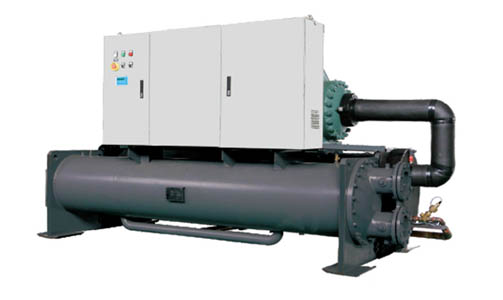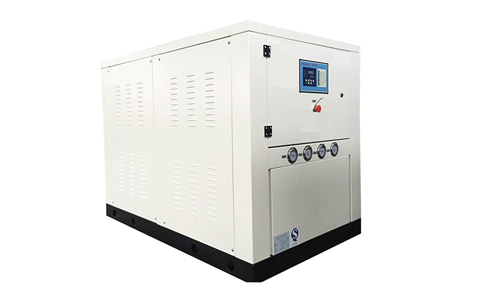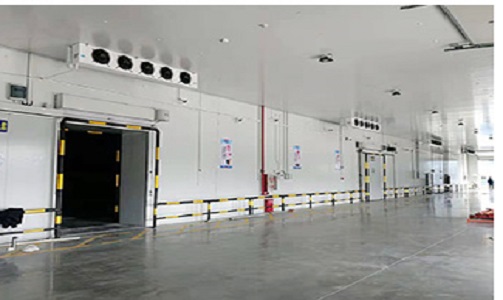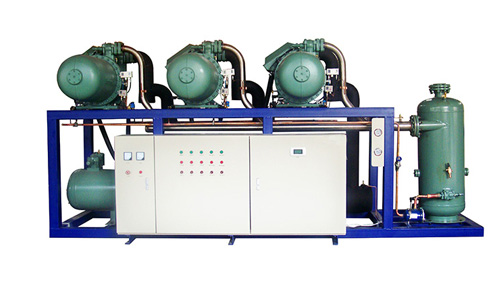Many industrial processes generate a lot of heat, which must be dissipated as quickly as possible to prevent damage to sensitive equipment and to prevent defects in the quality of the finished product.
An industrial chiller is a heat exchange machine that acts as a cooler and helps to remove unwanted heat from a process or machine. An industrial chiller can be a big deal, so it's vital to understand how to maintain it to keep it running for as long as possible.
Depending on the type of chiller you are considering, the main features of this list may vary slightly. For example, the key points on the water-cooled chiller maintenance list may not necessarily apply to air-cooled chillers.

Water-Cooled Falling-film Screw Chiller
Below is a general checklist for chiller machine maintenance with items that apply to air-cooled chillers and/or water-cooled chillers.
Industrial chiller maintenance checklist
All water inlets and outlets should be checked regularly for leaks.
All components of the compressor unit should be checked, including checking oil levels, leaks, vibrations, and changes in operating temperature.
The electrical contacts should be checked and cleaned.
The filter drier should be checked and dirty, old or faulty filters should be completely replaced.
Air-cooled chillers only
Cooling coils must be checked for signs of fin deformation and corrosion.
The condenser fan inspection should focus on checking the bearings for signs of wear and poor lubrication. Belts and couplings should also be checked and adjusted if necessary.
The condenser coils should be checked for leaks, corrosion and kinked or blocked areas.
For air-cooled chillers, return air dampers should be checked for optimum operation, alignment as well as bearing alignment and lubrication checks.
The fresh air damper of air-cooled chiller systems should be checked in the same way as the return air damper.

Box Type Water-cooled Chiller
Keeping pipes clean
Piping is the main pathway for heat transfer from chillers and has a significant impact on the performance of industrial chillers. Contaminants and impurities can increase thermal resistance. This can reduce the efficiency of heat transfer as the resistance affects the consistency of approaching temperatures in the chiller. It is important to brush these tubes at least once a year. With a powerful monitoring system, you will be able to spot problems before they occur. Giving you the opportunity to clean the pipes before they become a major problem.
Dealing with condensate
Keeping your condenser water clean is important for many of the same reasons for both boiler and chiller maintenance. Corrosion and scaling can both reduce efficiency. Both can build up over time if the water is not treated well. Untreated water can lead to increased condenser pressure, blocked heat transfer, and inconsistent water temperature and flow. Regular chemical treatment helps to keep the water clean, so filters should be changed frequently.
Analyzing compressor oil
If you are using a new chiller, it is standard practice to change the oil and filter after the first year. Also, analyze the oil to determine the frequency of future oil changes. The dirtier it is, the more frequently your system may need to be changed. We also recommend that a spectrochemical analysis of this oil is carried out once a year. This will help you to familiarise yourself with your system and its potential problems. Learning how to solve a variety of problems, from high water content to the particle size of contaminated oil, is invaluable.
There are also many chillers that have eliminated the use of oil altogether, thus reducing potential chiller maintenance costs.
Clearing the system
This process is only applicable to low-pressure machines. It involves purging the system of non-condensable gases. These gases can be generated in the chiller on the low-pressure side, where there is a pump or filter. As the evaporator operates in a vacuum, these non-condensable elements can escape. A purge ensures that air and moisture are at historically low levels.








